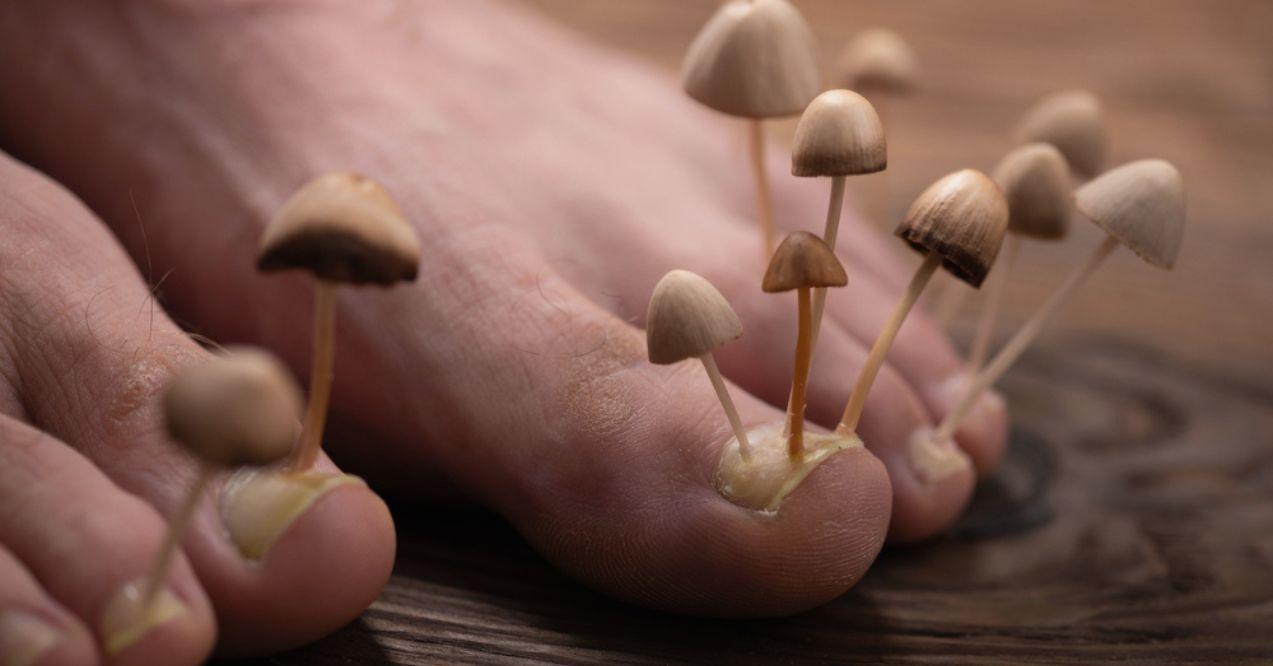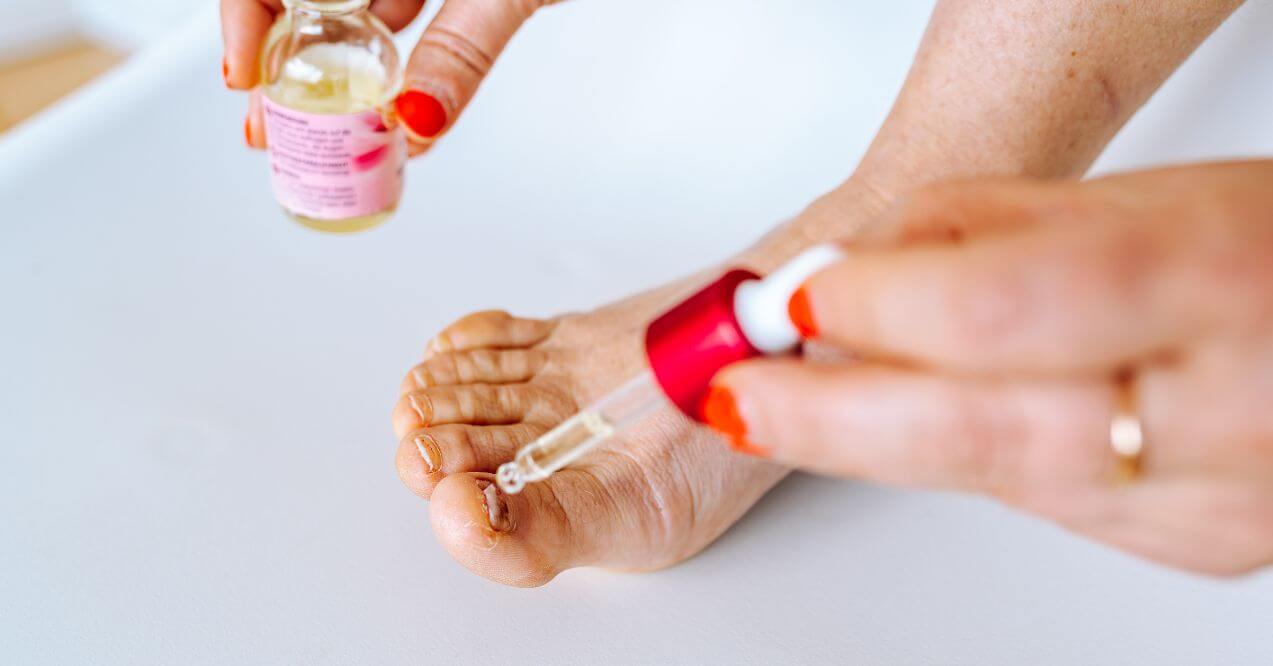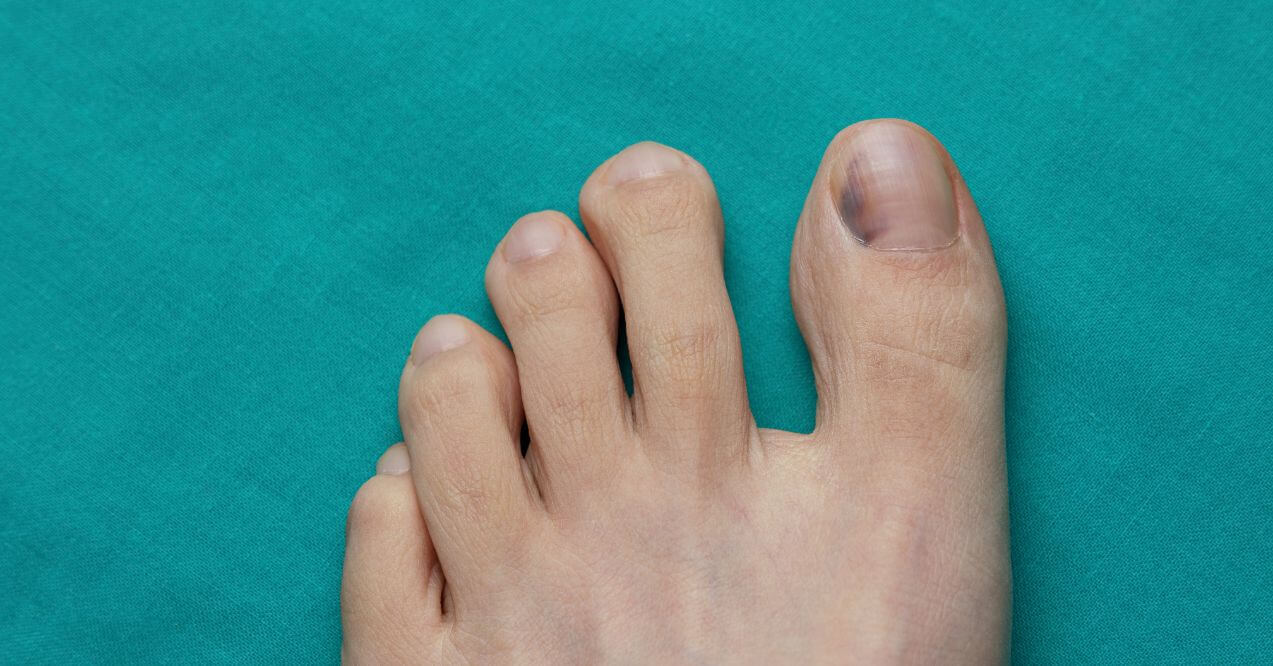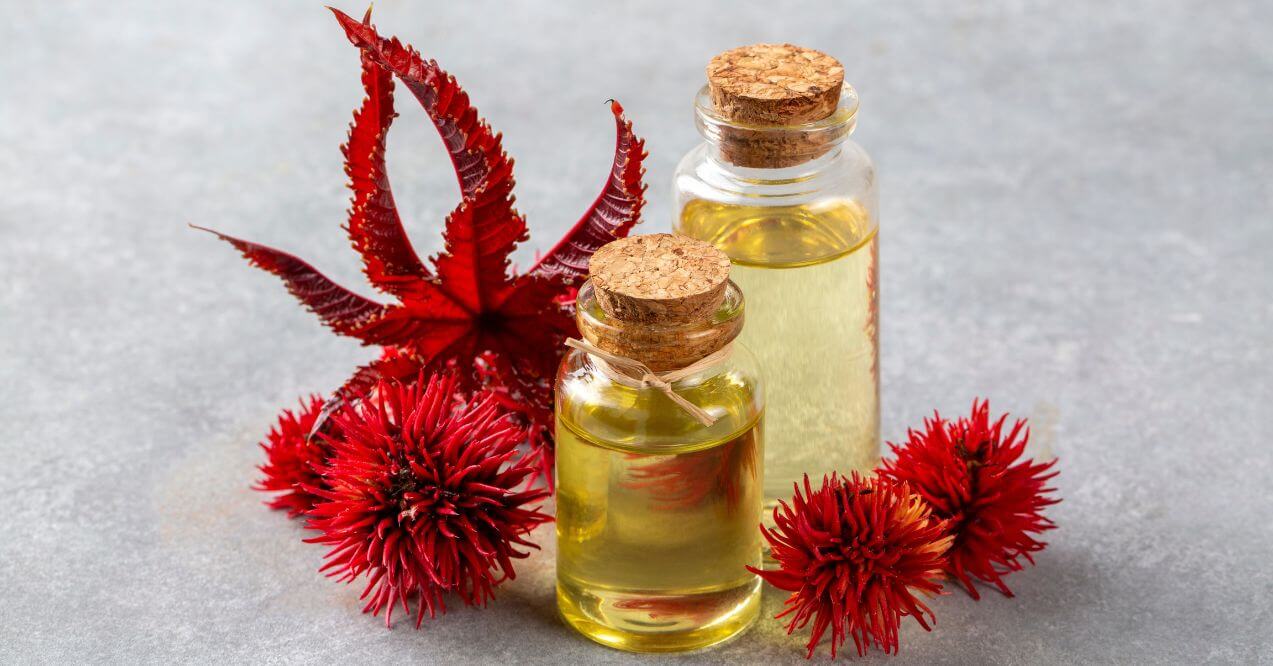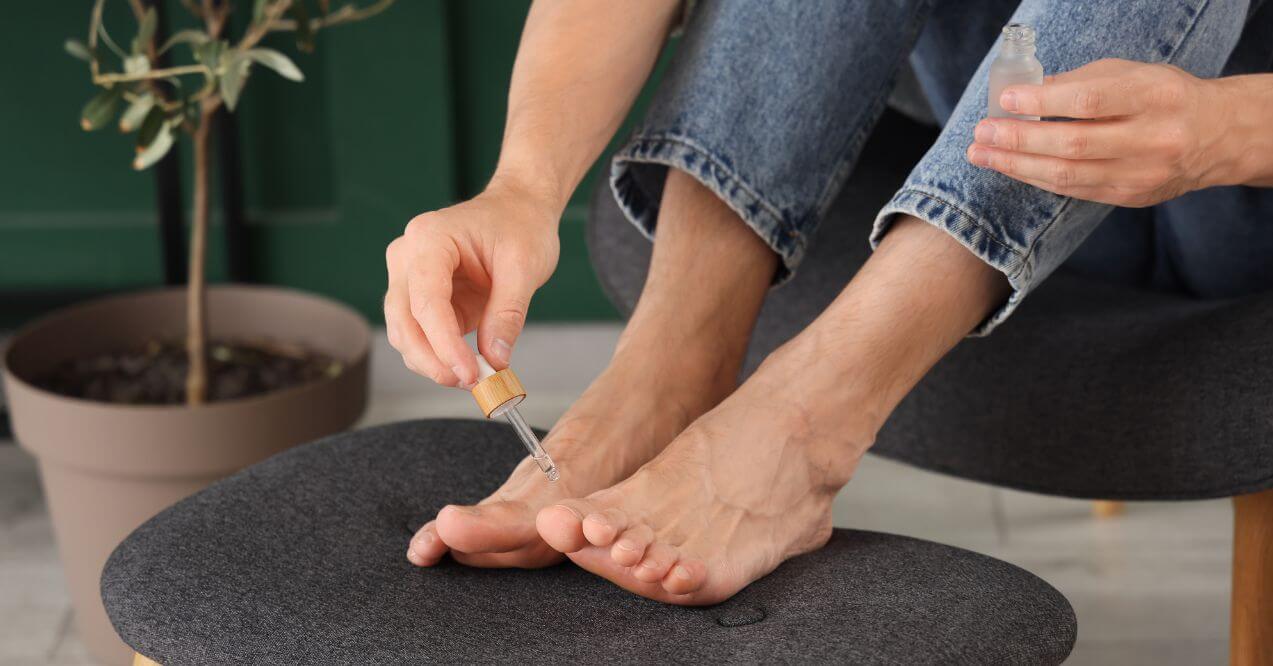How to Use Essential Oils for Toenail Fungus?
Looking for natural remedies? Discover essential oils for toenail fungus and how they will help fight infections. Start your journey today!
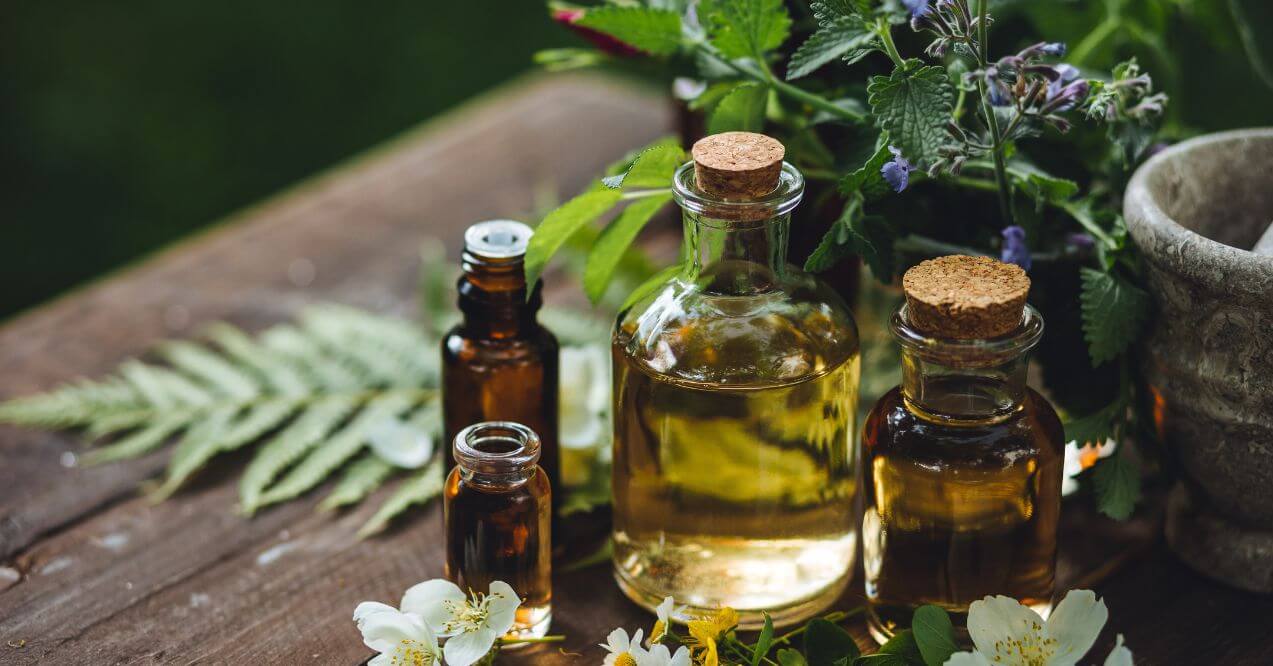

Toenail fungus, medically known as onychomycosis, is a common condition that affects many people worldwide. While conventional treatments are available, some individuals turn to natural remedies like essential oils for toenail fungus. These oils may offer antifungal properties that could help combat the infection.
In this article, we’ll explore four essential oils that show some promise (but not guarantee) in helping with toenail fungus issues, including how to use them safely and effectively.
What is Toenail Fungus?
Toenail fungus is an infection that occurs when fungi grow under, in, or on the toenail. It can cause the nail to become discolored, thickened, and brittle. In some cases, it may even lead to the nail separating from the nail bed.
Common symptoms of toenail fungus include:
- Yellowing or browning of the nail
- Thickening or distortion of the nail shape
- Brittleness or crumbling of the nail
- A slightly foul odor
If left untreated, toenail fungus can spread to other nails or even to the skin, making treatment more challenging.
How to Use Essential Oils for Toenail Fungus
While more research is needed, some essential oils have shown antifungal properties that may help in treating toenail fungus in early stages. It’s important to note that essential oils should be used as a complementary medium alongside conventional methods, and not as a replacement for professional medical advice.
Let’s explore some of the best essential oils for toenail fungus and how to use them safely.
1. Tea Tree Oil
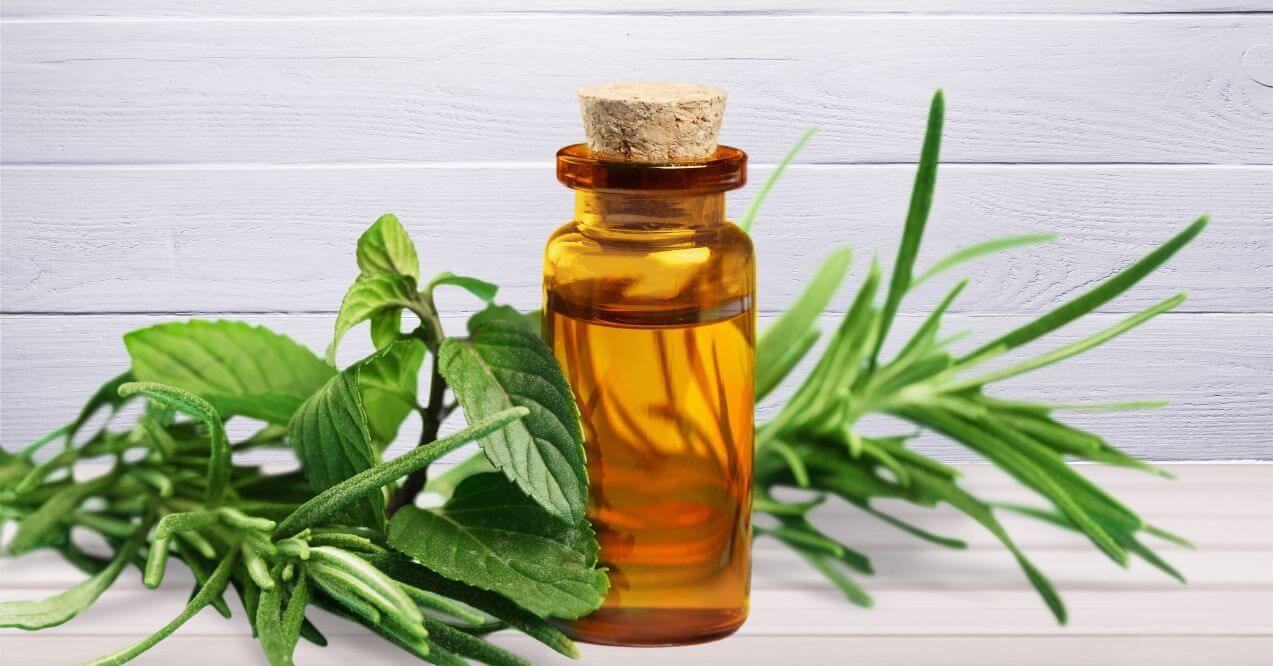
Tea tree oil is one of the most popular essential oils for toenail fungus. It contains an antifungal compound called terpinen-4-ol, which may help combat the infection.
Potential Benefits:
- Antifungal and antiseptic properties
- May help with skin conditions
- Could reduce inflammation
How to Use Tea Tree Oil for Nail Fungus:
- Clean the affected nail with soap and water, then dry thoroughly.
- Dilute tea tree oil with a carrier oil (like coconut oil) if you have sensitive skin.
- Apply 2-3 drops of the oil mixture directly to the affected nail.
- Allow the oil to soak in for about 10 minutes.
- Gently scrub the nail with a soft brush.
- Repeat daily until you see improvement.
Safety Considerations:
- Never ingest tea tree oil as it can be toxic if swallowed.
- If you experience any irritation, discontinue use and consult a healthcare provider.
2. Oregano Oil
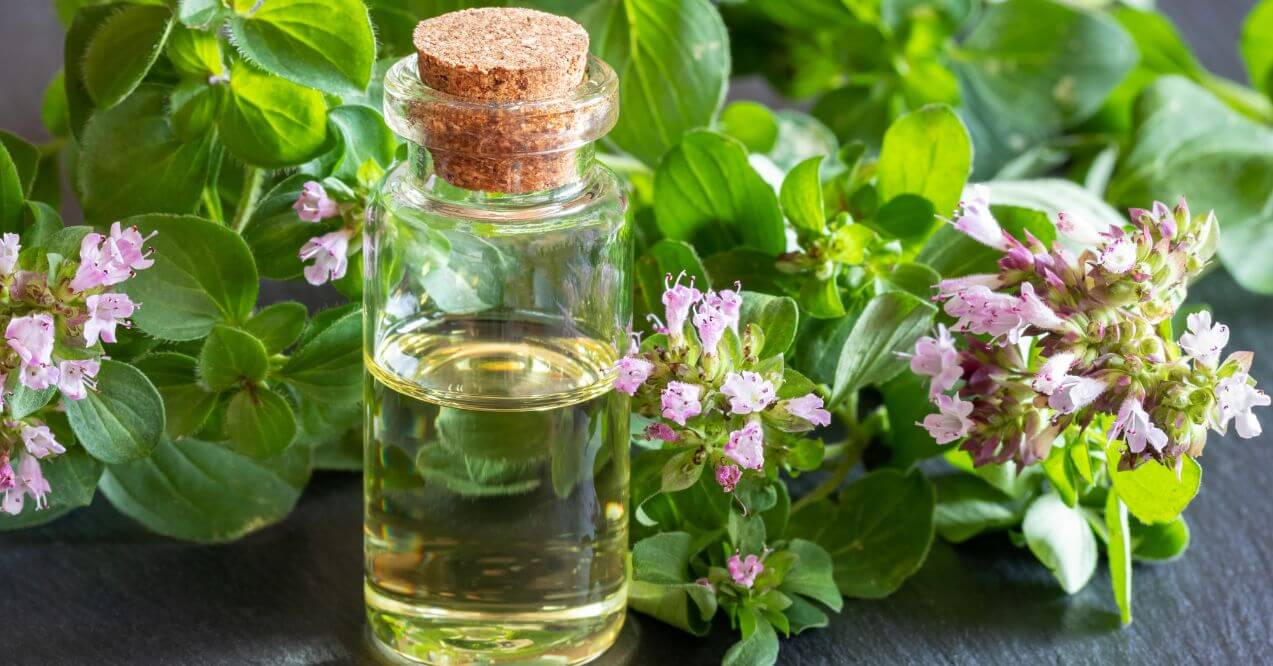
Oregano oil for nail fungus has gained popularity due to its high content of carvacrol, a compound with potential antifungal properties. One intriguing open study enrolled 20 patients diagnosed with onychomycosis. The treatment involved applying the oregano oil once daily for six months. At the end of the 12-month study period, 78.5% of the patients achieved a complete cure of their onychomycosis.
Potential Benefits:
- Natural antibiotic properties
- May help with yeast infections
- Could have pain-relieving effects
How to Use:
- Clean and dry the affected nail.
- Dilute oregano oil with a carrier oil like coconut oil.
- Apply 3-4 drops of the mixture directly to the affected nail.
- Let it sit for a few minutes, then gently scrub with a soft brush.
- Repeat daily until you see improvement.
Safety Considerations:
- Avoid using high concentrations as it may cause skin irritation.
- Pregnant women should avoid using oregano oil, especially during the first 16 weeks of pregnancy.
3. Clove Oil
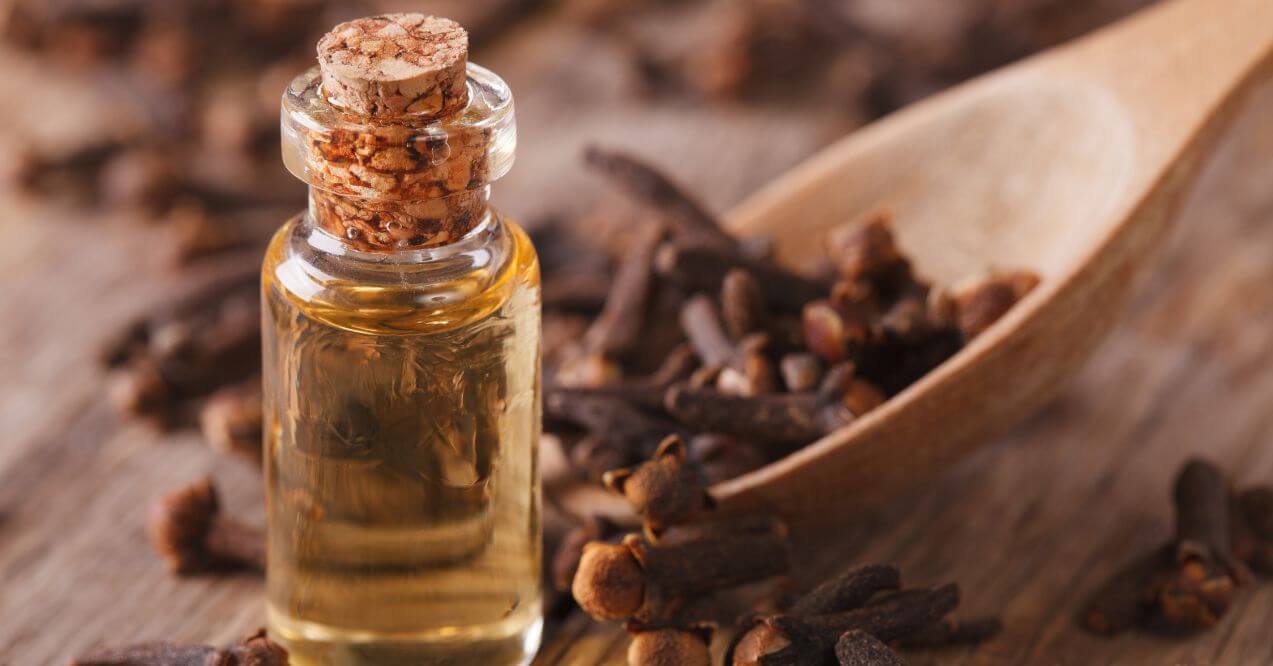
Clove oil for toenail fungus is another popular choice due to its high content of eugenol, a compound with potential antifungal properties. We explored a study that looked at how eugenol, a major component of clove oil, disrupts microbial cell membranes, which is a mechanism that can also apply to fungal cells, suggesting potential effectiveness against fungal infections.
Potential Benefits:
- May help kill bacteria and fungi
- Could soothe pain and inflammation
- Might boost immune function
How to Use:
- Mix 2-3 drops of clove oil with a carrier oil like coconut oil.
- Apply the mixture to the affected toenails.
- Massage gently to ensure absorption.
- Repeat twice daily until symptoms improve.
- Always wash your hands thoroughly after applying.
Safety Considerations:
- Avoid applying clove oil to mucous membranes or broken skin.
- Never inject clove oil or any essential oil into your body.
- If you experience any irritation, discontinue use and consult a healthcare provider.
4. Camphor and Eucalyptus Oil Blend

A combination of camphor and eucalyptus oils can be a powerful blend for treating toenail fungus, offering the benefits of both essential oils in one application.
A study published in the Journal of Ethnopharmacology found that eucalyptus oil exhibited strong antifungal activity against various Candida species, including those responsible for nail infections. The study suggests that eucalyptus oil could be a potential treatment for fungal infections.
When it comes to camphor oil, a study found camphor oil exhibited 100% growth inhibition against certain fungi at specific concentrations. These findings indicate camphor oil’s potential as a broad-spectrum antifungal agent, particularly relevant for toenail fungus treatment.
Potential Benefits:
- Strong antifungal properties from both oils
- Anti-inflammatory effects from camphor oil
- Antibacterial qualities from eucalyptus oil
- May improve circulation in the affected area
How to Use:
- Mix 2 drops of camphor oil and 2 drops of eucalyptus oil with 1 teaspoon of a carrier oil (like coconut or jojoba oil).
- Apply the mixture directly to the affected toenail and surrounding area.
- Gently massage the oil into the nail and skin.
- Repeat this process twice daily, preferably in the morning and evening.
Safety Considerations:
- Always dilute the essential oils with a carrier oil before applying to the skin.
- Perform a patch test before full application to check for any allergic reactions.
- Do not use on broken skin or open wounds.
- Never ingest the oil blend.
- If you’re pregnant, nursing, or have underlying health conditions, consult a healthcare provider before use.
Choosing the Best Essential Oil for Toenail Fungus
While all the oils mentioned have potential benefits, the best essential oil for toenail fungus may vary from person to person. Factors to consider include:
- Severity of the infection – More severe infections may require stronger oils like oregano or clove.
- Skin sensitivity – If you have sensitive skin, you might prefer milder options like tea tree oil.
- Ease of use – Some people find carrier oils like eucalyptus oil easier to apply.
- Personal preference – The scent and texture of the oil can affect your willingness to use it consistently.
Remember, consistency is key when using essential oils for toenail fungus. Whichever oil you choose, apply it regularly as directed for the best results.
A Word of Caution
While essential oils can be a helpful complementary treatment for toenail fungus, they should not replace conventional medical treatments, especially for severe infections. Always consult with a healthcare provider before starting any new treatment regimen, especially if you have underlying health conditions or are taking medications.
If you don’t see improvement after a few weeks of using essential oils, or if your symptoms worsen, seek medical attention. Your healthcare provider can offer more targeted treatments and ensure that the infection doesn’t spread or lead to complications.
Preventing Toenail Fungus Reinfection: Tips and Strategies
Toenail fungus can be challenging to treat, and reinfection is common. Here are some evidence-based strategies to help prevent toenail fungus from recurring:
1. Protect Your Feet in Public Spaces

Fungi thrive in warm, damp environments and can spread from person to person. To reduce your risk:
- Wear sandals or water shoes in public showers, locker rooms, and pool areas.
- Avoid walking barefoot in these high-risk locations.
2. Practice Good Foot Hygiene
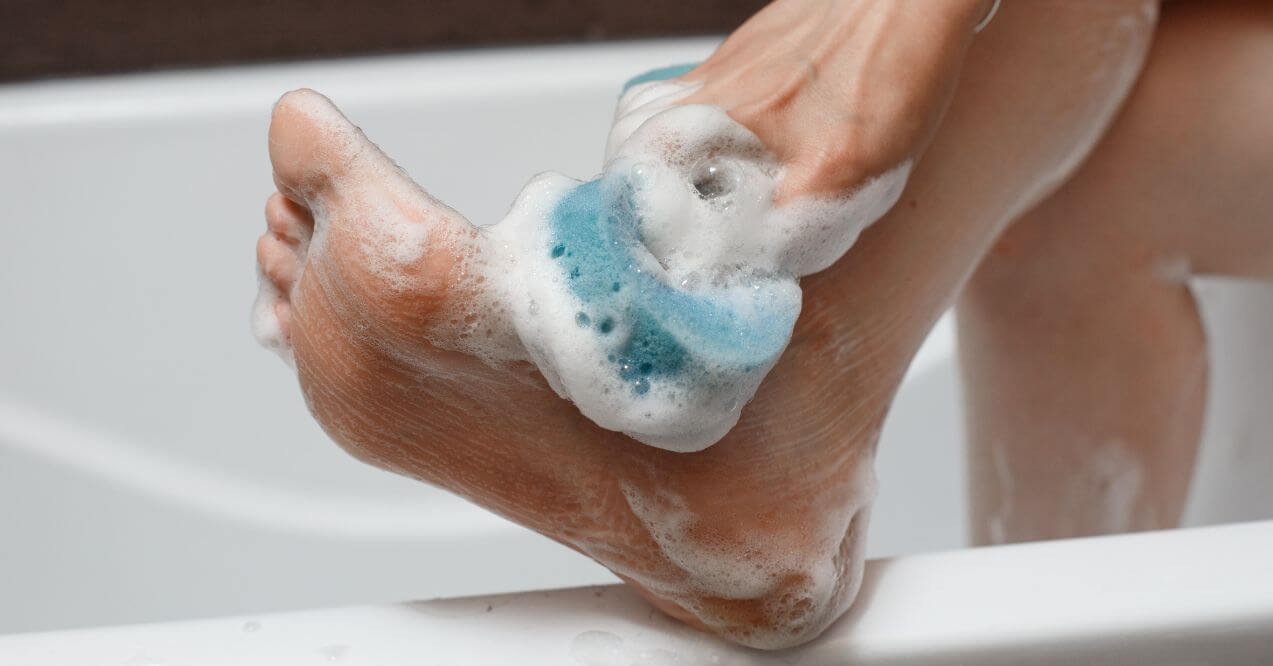
Proper foot care can significantly reduce your risk of fungal infections:
- Wash your feet daily with soap and water.
- Dry your feet thoroughly, especially between the toes.
- Consider using a foot powder to keep feet dry.
3. Make Lifestyle Changes

Simple changes in your daily routine can help prevent fungal growth:
- Wear fresh, clean socks daily.
- Rotate your shoes to allow them to dry completely between wears.
- Change out of damp socks and shoes as soon as possible.
- If you’ve recently recovered from a fungal infection, consider replacing old shoes to prevent reinfection.
- Keep your nails trimmed and clean.
4. Consider Antifungal Products

Using antifungal products can be an effective preventive measure. While many options are available, it’s important to choose a product backed by research.
Supplements For Toenail Fungus by PureHealth Research
Explore our toenail fungus supplements, designed to support the body’s natural defenses against fungal infections using a combination of well-researched, natural ingredients. Many formulas take a multifaceted approach, working to address existing fungus while also helping to prevent future occurrences.
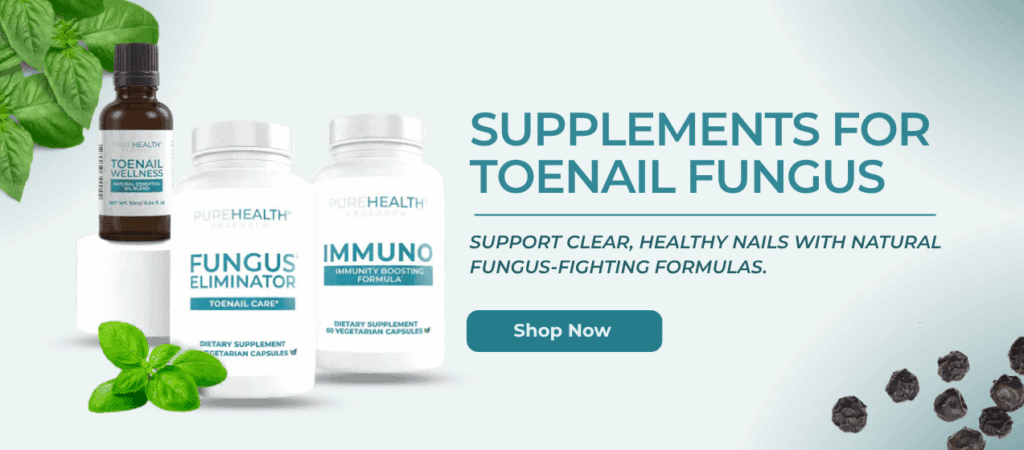
Common ingredients found in these supplements include:
- Wormwood – Known for its protective effects against various fungal strains.
- Turmeric – A powerful antioxidant that may boost immune function.
- Caprylic acid – Shown to have antifungal properties in some studies.
- Bioperine – May enhance the bioavailability of other nutrients.
Most supplements for toenail fungus are easy to take, typically requiring daily use with food and water. As with any supplement, it’s recommended to consult a healthcare provider before starting, especially if you have underlying health conditions or are taking medications.
Conclusion
While essential oils can be a valuable tool in your fight against toenail fungus, they’re not a magic cure. A holistic approach that includes proper hygiene, lifestyle changes, and professional medical advice when needed offers the best chance for successfully managing and preventing toenail fungus. But if you choose to give them a go, we have a few takeaways that might help:
- Always dilute essential oils properly and use them consistently for best results.
- Combine essential oil treatments with good foot hygiene and preventive measures.
- If symptoms persist or worsen, consult a healthcare professional promptly.
- Consider incorporating research-backed supplements like Fungus Eliminator by PureHealth Research for additional support.
Remember, everyone’s experience with toenail fungus is unique. What works for one person may not work for another, so be patient and willing to try different approaches under the guidance of a healthcare provider.
Clean your toenail. Dilute your oil using a carrier oil such as coconut or olive oil. Spread the mixture directly onto the affected nail and surrounding skin while repeating the procedure daily to achieve desirable results.
Thyme essential oil. The reason is that it contains a high concentration of carvacrol and thymol compounds. Science shows that these chemicals are effective against fungi infection.
Technically, it’s hard to say for sure. However, trying out a combination of solutions could speed up the process. Just keep in mind that toenail fungus can be pretty stubborn, even with top-notch treatment.
Sign up for our Healthy Living newsletter!
Advertisement. This site offers health, wellness, fitness and nutritional information and is designed for educational purposes only. You should not rely on this information as a substitute for, nor does it replace, professional medical advice, diagnosis, or treatment. If you have any concerns or questions about your health, you should always consult with a physician or other health-care professional. Do not disregard, avoid or delay obtaining medical or health related advice from your health-care professional because of something you may have read on this site. The use of any information provided on this site is solely at your own risk.



